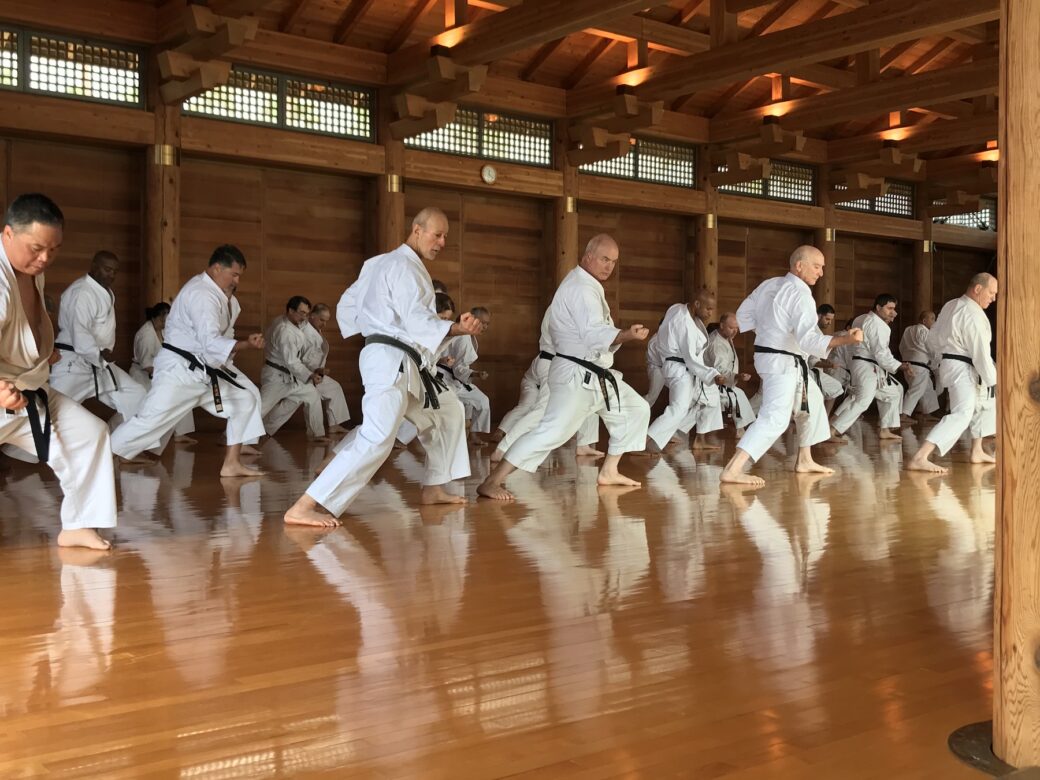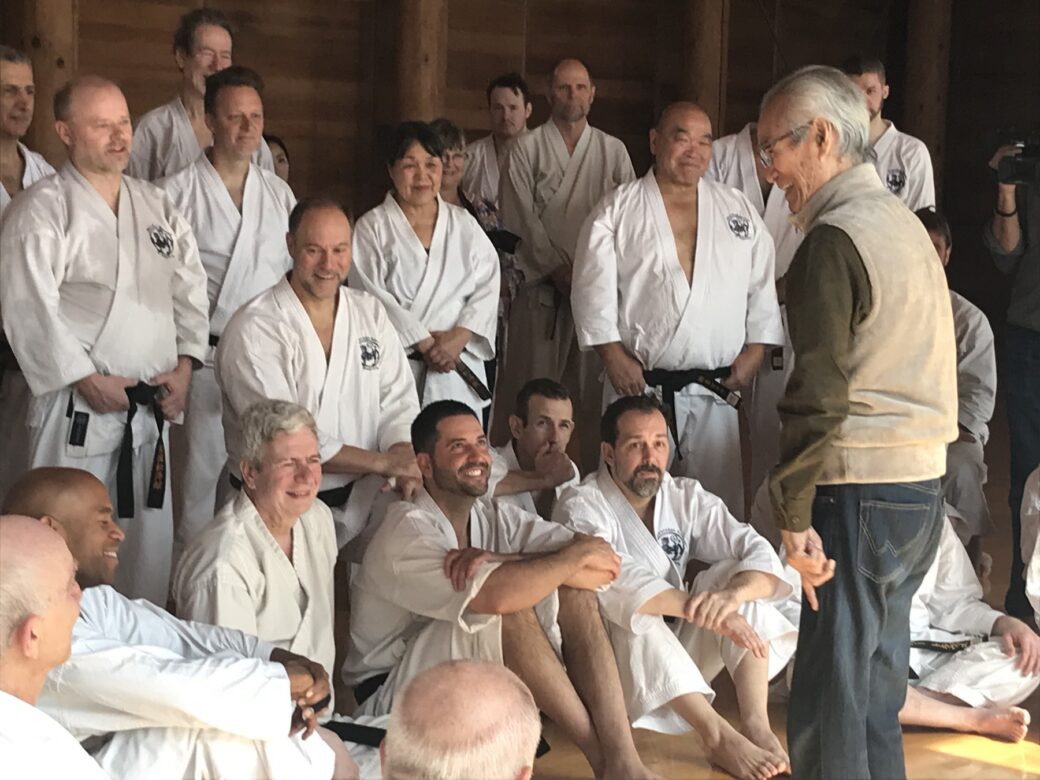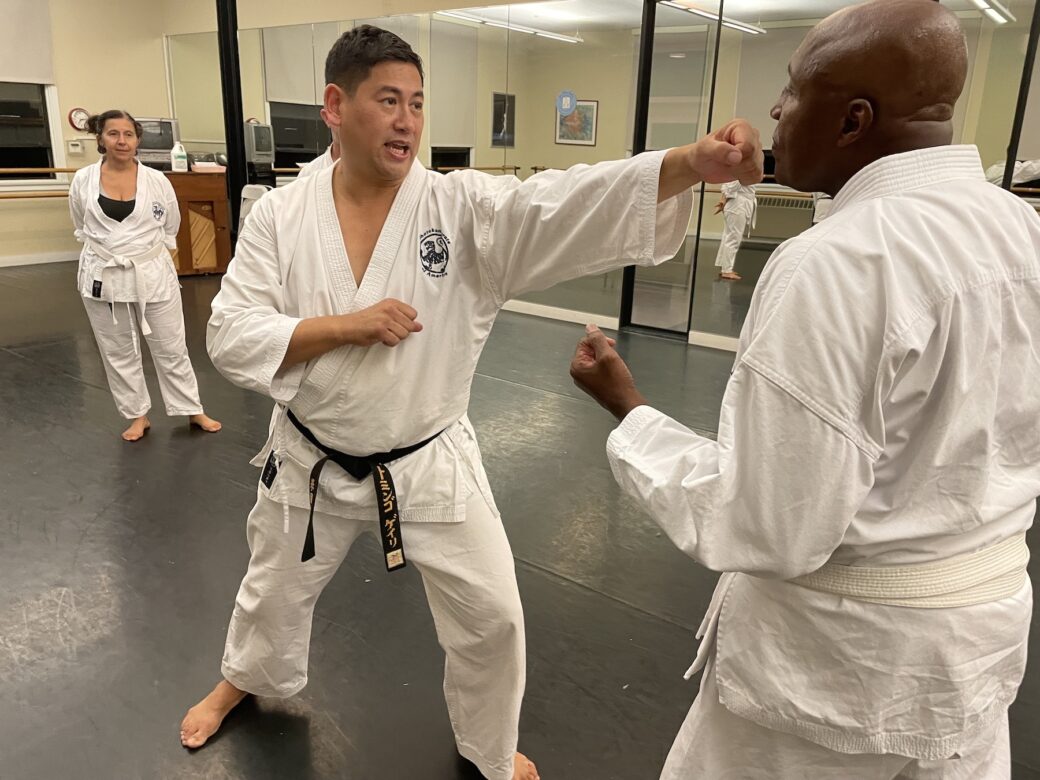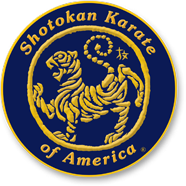What precautions are being taken for COVID?
We continue to monitor CDC, state, and county-level guidelines, and will adjust our training practices as appropriate. We strongly encourage participants to get vaccinated and boosted. Anyone who is sick, experiencing symptoms, or who has possibly been exposed to COVID must refrain from attending in-person sessions.

What are practices like?
Typical karate practices are divided into three parts — kihon (basics), kata (forms), and kumite (sparring). At the beginning of class, we kneel and bow, followed by 5-10 minutes of stretching, before continuing into kihon. At the end of class, we kneel and bow again.
Will I get hit in class?
Karate is a fighting art, and we do spar regularly in class. However, our goal in sparring is to improve ourselves and our fellow students while avoiding injury. To this end, we emphasize control in order to minimize the risk of accidents. Students do make physical contact with each other, but it is typically mild.
Can those with physical limitations still practice?
Allowances are made for those with physical limitations, but everyone is expected to participate to the fullest of their abilities.
What ages are allowed to practice?
Karate is a lifetime pursuit, and we have a wide range of students. Generally, the minimum age for the Beginner Class is twelve, but we take into account the maturity level of each student. On the other hand, there is no maximum age limit, and SKA’s own sensei, Tsutomu Ohshima is over 90!

Can I arrive late or leave early?
Although we understand that San Diego traffic can be unpredictable, it is essential that students arrive on-time for class, and stay for the entire class. Classes have a structure which is disrupted if some students arrive after bow-in, or leave before bow-out. The Beginner Class, in particular, provides the bare minimum amount of time for stretching and instruction. As such, every minute counts!
Can I observe a class?
Anyone interested in learning more about our classes is welcome to observe one. Please arrive prior to the start of the class so that you can meet the instructor, ask questions, and be directed to an appropriate viewing location. We ask that anyone observing a class refrain from asking questions, taking phone calls, or otherwise disrupting the class while it’s in session.
How much does it cost to train?
Our dojo is a member of Shotokan Karate of America (SKA), a nonprofit organization dedicated to the preservation and teaching of traditional Okinawan/Japanese karate. While newcomers may be allowed to try a class initially, to continue training, they must join SKA. Membership for beginners is $75 for the remainder of the year, with family discounts available. Dues for our San Diego Peninsula dojo are an additional $55 per month. These dues are necessary to cover the cost of leasing our practice space and for covering other expenses for the dojo.
Which class, Beginner or Intermediate, should I participate in?
Updated: Currently we offer a single type of class, which is appropriate for all levels. We expect to offer additional class types in the future, once the COVID situation stabilizes.
Prior to COVID, we offered both beginner and intermediate classes, and recommended that all students, whether new to karate, starting back up, or longtime participants of another style, attend our Beginner Class.

What should I wear? Do I need a gi (karate uniform?)
A gi is not required to participate. For those without gis, we recommend athletic attire, such as shorts and teeshirts. Shoes are not allowed, as they interfere with karate movements, and may cause injury.
Is any equipment required?
We recommend that students wear a mouthguard. And although they are not always used in the Beginner Class, we recommend that students purchase traditional cloth hand pads, which provide an extra layer of protection during kumite.
I did JKA, ISKF, Shotokai, etc. — is SKA Shotokan similar?
There are many different schools of Shotokan nowadays, and while they share similarities, there are many ways in which they diverge. Participants from other schools may find SKA’s techniques, especially those for throwing straight punches, stepping, and turning to be somewhat different from what they are used to. This is not an insurmountable obstacle, as many students coming from other schools have gone on to earn blackbelts in SKA. However, the shift between styles requires time, practice, and commitment to retrain muscle memory.
